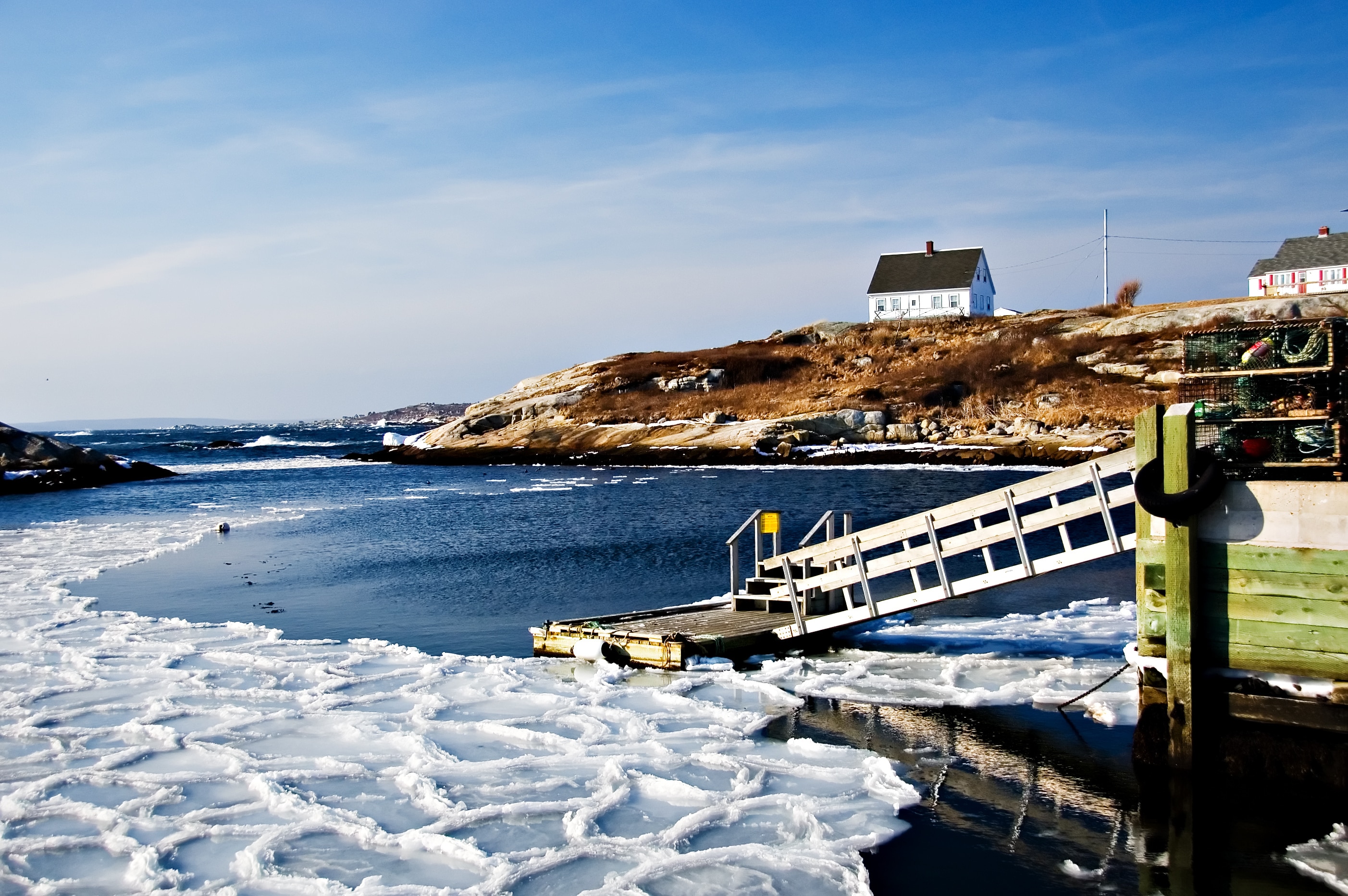
The state is home to numerous fishing grounds, key among The Kennebec River, Sunday River, Big Squaw Mountain, Big Squaw Mountain, Fish River Chain of Lakes and The Allagash Lakes. There are also plenty of fish species in these waters. The most common include: Brook trout, Brown trout, Landlocked salmon and Lake trout, which often swims at depths of between 10 to 100 feet. Lake trout can be caught using minnows, live bait or silver jigs. The landlocked salmon, on the other hand, is found in most ponds and lakes, and can be caught using silver lures, live bait or worms. The Department of Inland Fisheries and Wildlife in Maine is the entity charged with regulating fishing activities in the state. Under the regulations, anglers over the age of 16 must obtain a license as stipulated to go fishing.
When you go out fishing in winter, the first thing you need to do is stay safe by ensuring the ice beneath is thick enough to carry your weight, along with the heavy fishing gear and camp. You also need to decide the type of fish you want to catch beforehand. This decision is determined by the targeted fishing location and the type of tackle and bait you use because different fishing tactics are used to catch different fish species. To get the most out of your expedition, don’t restrain your moves to inland lakes and streams, you can go offshore where fish such as Pollock and striped bass are common year round. The other fish found along the Maine seacoast include bluefish and striped bass. However, the bitter cold winters in Maine can prove challenging for any fishing expedition. According to Amazing Fish A Metric, below are 6 tips for catching brook trout and other fish during winter.
1. Get on the Ice very early in the morning – ice fishing expeditions are best conducted at dawn or early in the morning because early rising fish such as trout often complete their feeding by 10am.
2. Stay on shallow grounds – fish such as Brook trout are common around the shallow shorelines with water depths of between 2 to 10 feet. The best fishing spots along the shorelines are those with boulders and sunken vegetation and logs.
3. Target water supply inlets – this is an important fishing trick because Brook trouts, small baitfish and other aquatic invertebrates prefer water inlet areas. The moving waters are known to provide nutrients that attract small baitfish and aquatic invertebrates and also helps dissolve oxygen. However, you should be aware of the danger lurking in thin ice when fishing at the inlets.
4. Take advantage of the sunshine shadow – fishing under direct sunshine can be very challenging because bright light often pushes the likes of Brook trout into the deeper waters. To win using this strategy, place your tipup along the shoreline, on the eastern side of the water body. This will hide the rising sun behind objects like trees, thereby creating a long standing shadow line.
5. Move your traps – to enhance the chances of catching a trout, drill several new holes about 15 feet away from your honey hole to create a number flags. Once this is done, move some of your non productive tipups to these locations to enhance your fish catching rate.
6. Check your baitfish regularly – the baitfish should ideally be reexamined after every 30 to 60 minutes. This is especially true if your flag action don’t materialize quickly. Making this assessment will help you identify empty hooks or check how the fish stole the bait without triggering the flag.